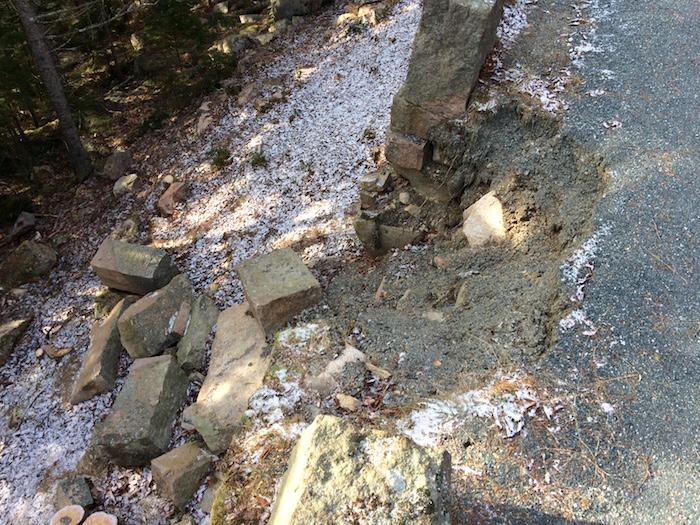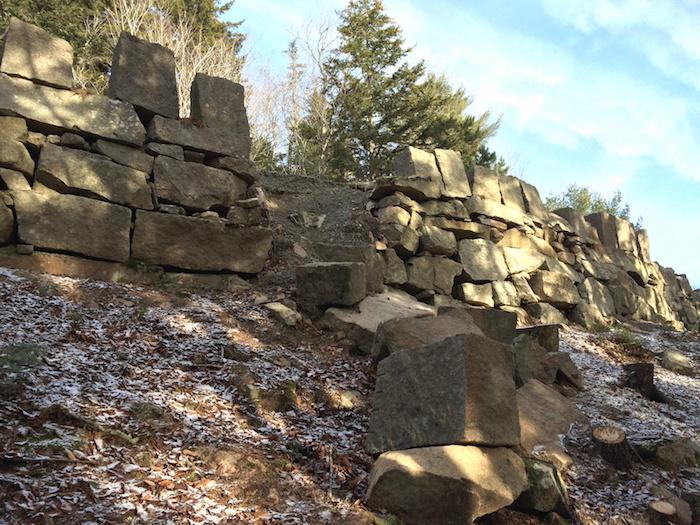
A section of retaining wall along the carriage roads in Acadia National Park that collapsed back in 2015 is now going to be repaired/NPS
Repairs to a collapsed stone retaining wall within Acadia National Park's network of carriage roads will require closure of a mile section of road beginning August 1 and lasting through September 29.
Park officials said the repairs are to a section of carriage road between the Jordan Pond Gatehouse and Wildwood Stables.
The retaining wall failed due to a weakening of the underlying support material caused by the leaching of storm water into the subsurface of the carriage road. The lack of proper drainage over many years caused the eight-foot tall retaining wall to gradually displace outward until a 10-foot wide section collapsed. To fix the wall and correct the drainage problem, the repair work will require the replacement of the entire 220-foot long retaining wall and the carriage road it supports. After completing the repair, the section of carriage road between intersections 16 and 17 will be resurfaced.
The carriage road will be closed to the public at all times until the work is complete to ensure visitor safety. Passage will not be possible during the work due to the excavation of the entire carriage road, and presence of heavy equipment and materials. Signs will be placed at both ends of the carriage road closure to indicate alternate routes for pedestrians and cyclists.
“While August is the busiest time of year for Acadia, this critical repair requires that we close the entire section of carriage road to get the work done as quickly and safely as possible,” said Superintendent Kevin Schneider. “We encourage visitors to enjoy the rest of the park’s historic carriage road system during this time.”
The repair project is funded in the amount of $400,000 by the National Park Service’s cyclic maintenance program and is being completed under contract with Harold MacQuinn, Inc. of Ellsworth, Maine.
The 45 miles of carriage roads in Acadia were a gift of philanthropist John D. Rockefeller Jr. and his family. As a skilled horseman, Mr. Rockefeller wanted to travel by horse and carriage on motor-free roads into the heart of Mount Desert Island. His construction efforts from 1913 to 1940 resulted in a system of carriage roads with sweeping vistas and intimate views of the landscape, which continue to be enjoyed by thousands of visitors each year.
To help protect the carriage roads in perpetuity, the National Park Service formed a partnership with Friends of Acadia in 1995. Under the partnership, FOA established an endowment, which annually provides about $200,000 to the park for regular maintenance. In addition, FOA coordinates volunteers who contribute thousands of hours to cleaning ditches and culverts, clearing brush, and assisting park staff with other carriage road restoration projects.
A portion of park entrance and campground fees also helps fund carriage road maintenance. These funds have been used to repair stone retaining walls, reopen more than 100 overgrown scenic vistas, and re-point, clean, and waterproof all of carriage road bridges in the park.

The mile-long section will be closed from August to October for repairs/NPS



Add comment